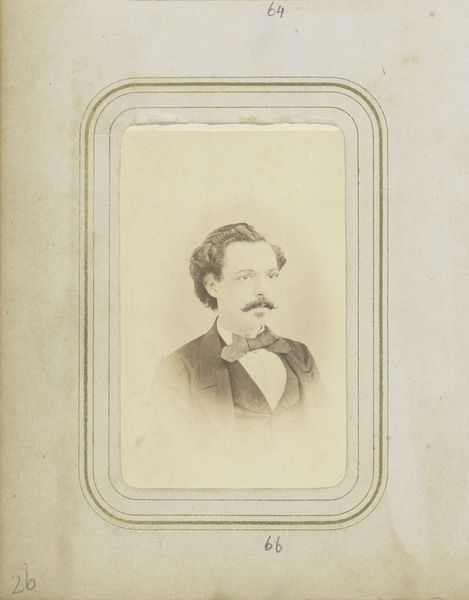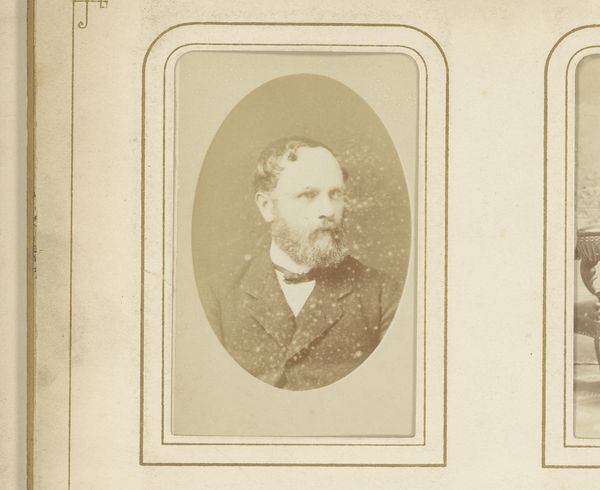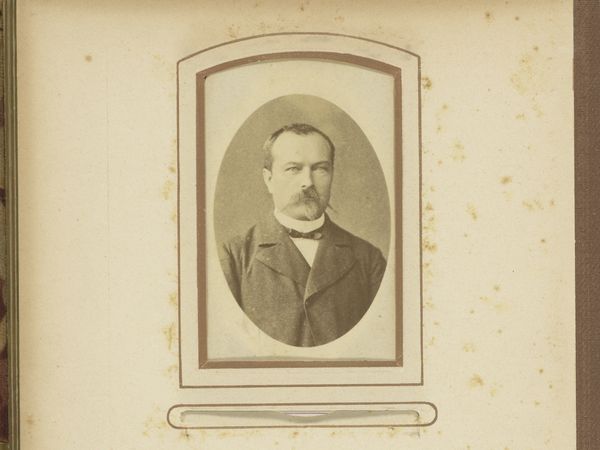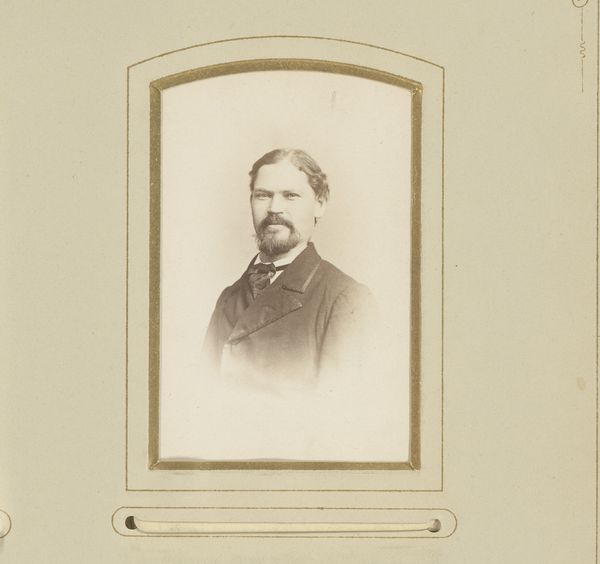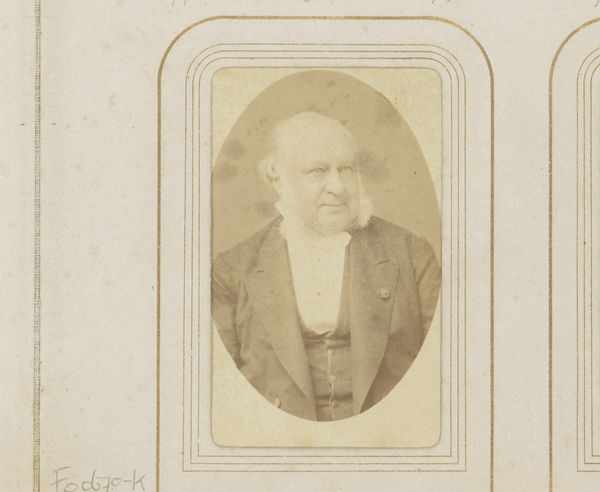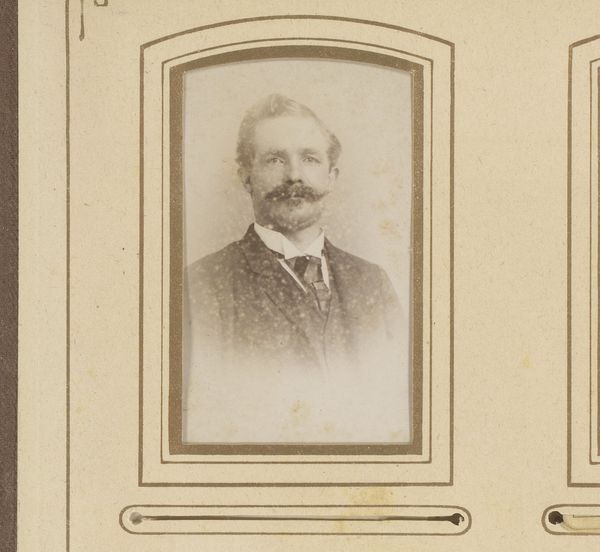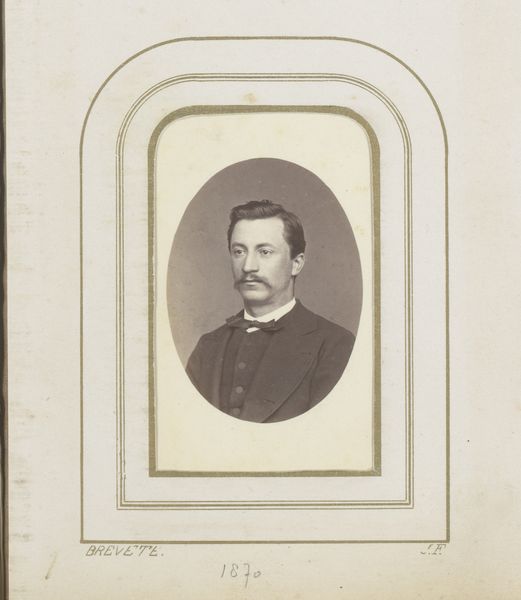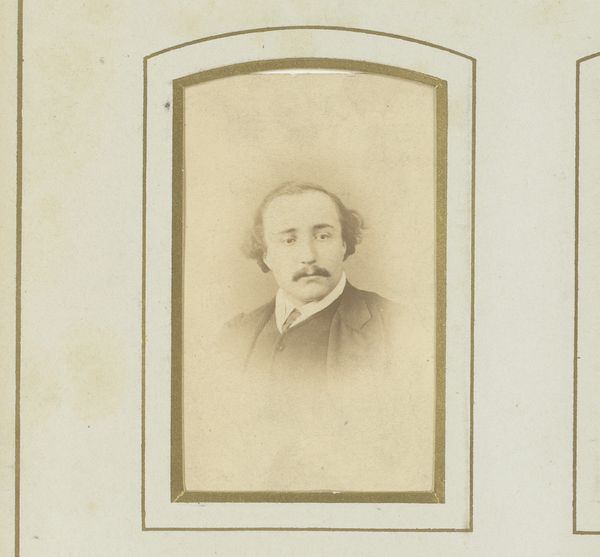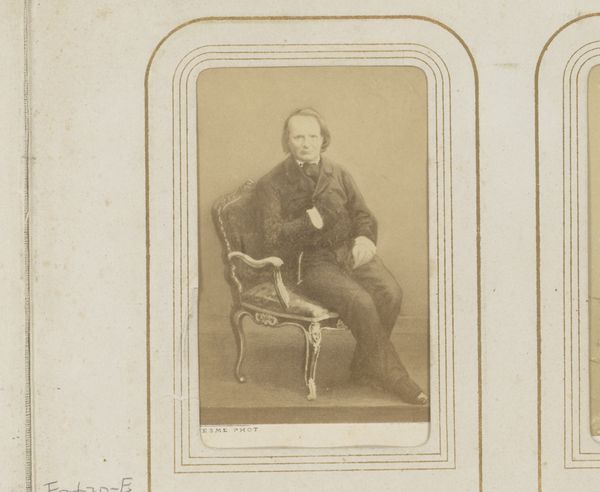
photography
#
portrait
#
photography
#
19th century
#
realism
Dimensions: height 84 mm, width 51 mm
Copyright: Rijks Museum: Open Domain
Curator: What a stern visage! He almost looks burdened by something. Editor: Indeed. I find myself immediately drawn to the material itself – a photograph, quite possibly a salted paper print given the date, around 1870-1890. The fading and spotting on the image tell their own story of preservation, or perhaps a lack thereof. Curator: A fitting metaphor for memory itself! We are looking at "Portret van een man," or "Portrait of a Man" in English. The subject, in his rather ornate military garb, seems to project a careful authority. Look at the symbolism in the uniform – the meticulously arranged buttons, the braiding, each carrying significance in rank and regiment. It's a powerful performance of masculinity and social position. Editor: Precisely, and the performance has material underpinnings. Those buttons weren't spun from thin air. Who made them? Where were they manufactured? Who tailored the uniform itself? The photograph attempts to immortalize a particular identity, yet obscures all the human labor involved in constructing it. Even the photographer and their studio of "Bacard Fils" play a material part through their labor, framing, capturing, and selling it onward for profit. Curator: And in freezing this man's image in time, it has become an artifact imbued with the aura of a bygone era. These portraits offered a simulacrum of immortality. Family lineages are visually cemented through such portraits, reaffirming the sitter's existence for posterity. Even today, it piques our curiosity – who was he? Editor: It speaks volumes about 19th-century society's relationship with material culture and, frankly, class. Photographic portraits became increasingly accessible, but their production remained enmeshed within the burgeoning industrial economy of the time. Consumption made easier through capitalist ventures. Curator: A tangible sliver of someone's life then, resonating even now. What strikes you most profoundly after our little examination, perhaps? Editor: The photograph’s ability to be mass-produced and its transformation into both intimate object and historical document fascinates me.
Comments
No comments
Be the first to comment and join the conversation on the ultimate creative platform.


